Corrosion
Gideon Analytical Laboratories received metallurgical corrosion failures from lamp sockets. The materials and the insulation protection was compared to distinguish the difference between the two lamp sockets. The lamp sockets were overheating and melting the wire insulation in the application. These sockets are a type of bi-pin lamp fitting. Bi-pin lamp fittings are for use in incandescent (especially halogen) and some fluorescent lights. MR16 refers to the lamp construction and overall diameter at its largest circumference. The failed socket is pictured below, at left, it showed extensive overheating and melting of the wire insulation.
Gideon Analytical Laboratories provided analysis. The plating on the wire was noticeably delaminated. The clip had addition metal on both sides where the lamp pin made contact. The clip was removed from the ceramic housing and expanded to reveal the inside of the clip. There was an extra piece of metal there, which undoubtedly came from the lamp pin metallurgy. EDS analysis on micrographs taken of the clip reveal two extra peaks, which were coming from the lamp pin; they were iron and chromium. The micrograph is pictured directly below and the iron and chromium peaks labeled with “A” and “B”, respectively. The EDS spectral analysis is pictured at the far bottom.
Gideon Analytical Laboratories concluded that increased contact resistance occurred when the chromium plated lamp lead delaminated because of heat produced in the application, this, in turn, produced excessive heat causing the burning of the wire insulation. The root cause was the poor plating on the lamp leads, which should not delaminate when subjected to heat.
Gideon Analytical Laboratories determined that nothing was wrong with the sockets in question. Gideon Analytical Laboratories can provide candid and accurate information about exactly how and exactly why electrical components fail. However, not only can Gideon Analytical Laboratories identify causes of failures. Gideon can also determine whether or not an electrical component is reliable or faulty.
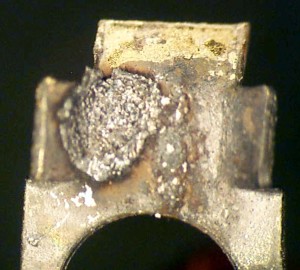
Tab with corrosion
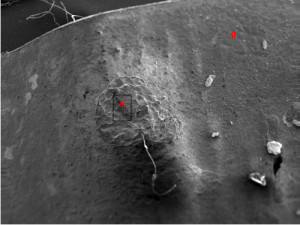
Micrograph of corroded spot
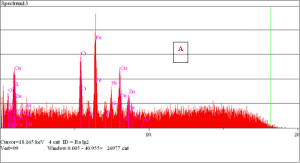
Spot A on the micrograph
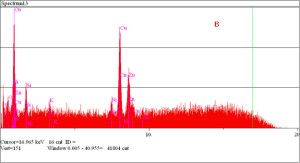
Spot B on the micrograph
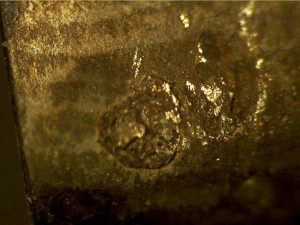
Pitting on the lead frame